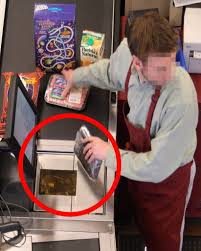The combination of a still-slow world economy straining consumers’ buying power, along with decreased spending by retailers on loss prevention, has led to a significant increase in global shrink numbers. As a percentage of sales, shrink rose from 0.94% of total sales in 2014 to 1.42% this past year, an increase of more than 50%.
In the U.S., the shrink percentage rose even more steeply, from 1.28% in 2014 to 1.97% in 2015, a 54% jump. These figures are from the latest Global Retail Theft Barometer, a survey of more than 200 retailers representing 113,000 stores in 24 countries, conducted by The Smart Cube with retail loss prevention analyst Ernie Deyle and underwritten by a grant from Checkpoint Systems. Total shrink costs in the 24 countries studied equals approximately $123.4 billion (U.S.).
Discussing the survey results, Deyle blamed the combination of tough times and reduced loss prevention (LP) resources. “There are stresses on the consumer’s wallet, and in addition the resources that retailers’ LP departments can use have also shrunk, creating the worst of two evils,” Deyle said in an interview with Retail TouchPoints.
Advertisement
Because this year’s study had access to comparable data from the previous year, it provides apples-to-apples comparisons in a number of areas. Among 11 retail verticals where these like-for-like comparisons were possible, shrink grew in seven, declined in three, and was neutral in one. Similarly discouraging data was reported on a national basis: In 16 countries where like-for-like comparisons were possible, shrink increased in 10 and decreased in six.
In the U.S., the study reports the highest shrink rates in apparel (2.28%), pharmacies/drugstores (2.25%) and non-grocery retailers (1.9%). U.S. retailers participating in both the 2014 and 2015 studies reduced their overall loss prevention spend to 0.50% of sales, contributing to the reported increase in shrink.
Employee Theft Is Biggest Cause Of U.S. Shrink
Shoplifting is the leading cause of shrink in 18 of the 24 countries studied, but in the U.S. employee theft ranks first. It accounts for 45% of the total, followed by 36% for shoplifting. Supplier fraud and administrative/non-criminal losses are the other two major contributors to overall shrink, according to Deyle.
“The number-one cause of internal theft is point-of-sale transaction manipulation, such as a cashier ‘hooking up’ a friend with a discount or otherwise manipulating a transaction for their own gain,” he said. “These types of sales reducing activities happen all the time, and they are a leading indicator of losses.”
Multiple Defense Layers Help Reduce Shrink
U.S. retailers are using a variety of tools to combat shrink, including CCTV/DVR (83%), alarm monitoring (78%) and security guards (63%). To protect merchandise, the most common solutions include electronic article surveillance, used by 68% of respondents; spider wraps/security keepers (41%); and advanced inventory control tactics (27%).
“There needs to be multiple layers of defense,” advised Deyle. “Retailers want the person who comes into their store to shoplift to spend more energy but to get less. Using a multi-level, multi-tiered strategy, you can create enough hurdles to have a deterrent effect.”
Deyle also recommends better use of data analytics, in combination with physical LP tools such as smart shelving. “Smart shelving that time-stamps when a product is removed, such as the shelves that force the next container of deodorant to the front when a customer takes one, might reveal that a store sells an average of 3.1 containers during an entire day,” said Deyle. “If nine containers are removed in less than 30 seconds, that would be a strong indication of theft taking place.”















